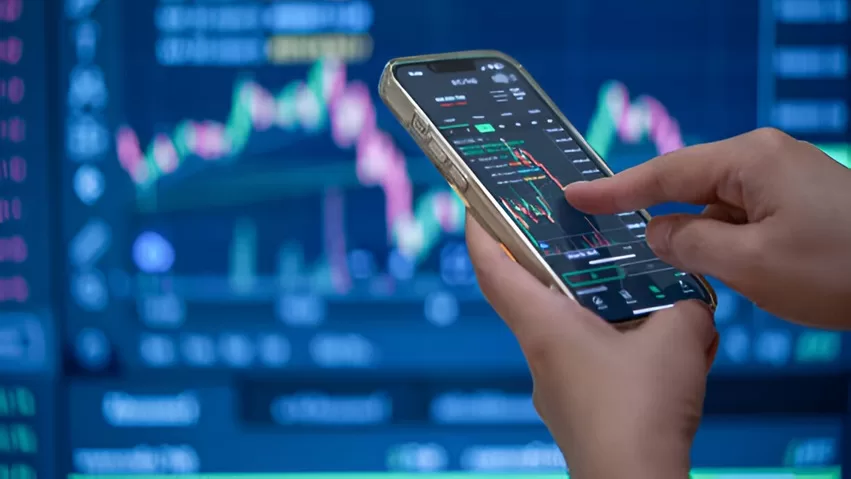Finance
How Technology is Redefining Forex Trading

The Technological Shift in Forex Trading
Generally, the forex industry has gone through significant changes driven of advanced technology. A market that was barely accessed by anyone other than banks and huge institutions is now accessed by individual traders across the globe. The impact of technology on this industry has changed the experience of trading, facilitating traders to execute transactions with ease and precision.
The Evolution of Forex Trading Platforms
The Internet has made it easy for forex traders to access the market. With the online platforms, for instance MetaTrader 4 (MT4) and MetaTrader 5 (MT5), they get a suite of tools to help novice and experienced traders keep tabs on trades and execute them. The advanced online trading platforms are equipped with sophisticated charting tools, automated trading features, and real-time data analytics used in decision making.
Automation and Algorithms
Algorithmic trading, also known as automated or “algo” trading, executes trades based on pre-set parameters. Algorithms process massive datasets and identify the patterns of behavior within markets, which can be very beneficial in high-volatility markets. The automation, therefore, made trading faster and more efficient by allowing traders to instantaneously respond to fluctuations in markets.
Impact of Mobile Trading
With mobile trading applications, the trader is able to exercise flexibility and control as they can monitor and operate from anywhere. Mobile trading applications have transformed the way people engage with the forex market by giving easy and quick access to real-time notifications on their trading accounts. This development is especially relevant for traders in emerging markets, such as online metal trading in India, where smartphone usage is on the rise, introducing more participants to enter the trading space.
Artificial Intelligence and Machine Learning in Forex
Artificial Intelligence (AI) and Machine Learning (ML) are two of the most transformative technologies impacting the forex market. AI-powered tools can analyze vast datasets which can produce market forecasts, identify trends, and enable traders in making informing decisions.
Predictive Analytics
AI algorithms can identify patterns and predict potential future price movements, so traders can plan according to the data produced by preceding patterns. Therefore, AI analysis of historical data can predict the possible trend for ups and downs in the currency pairs, so that the traders can mitigate their risks.
Sentiment Analysis
Machine learning models can conduct sentiment analysis by parsing social media and news to gauge market sentiment. For a trader, that might be a very powerful information input into how global events may affect currency prices, and this is priceless for people trading in volatile markets.
Big Data and Real-Time Analytics
Every forex trade generates massive amounts of data every split second. Big Data analytics processes this data into actionable insights that traders can leverage.
High-Frequency Trading (HFT)
The algorithms analyze large datasets in milliseconds and make high-speed trades. This is a speed advantage highly favorable to the forex market: it allows the trader to identify trends faster with historical and real-time data, thus improving the chances of successful trades.
Enhanced Risk Management
The major benefit of Big Data is its ability to provide real-time risk assessments to avoid potentially disastrous trades. Furthermore, aggregation tools can be used to sum up economic indicators, current political events and happenings, and the overall atmosphere of the market, providing a complete view of the market landscape for the traders to adopt a more prudent approach to risk management.
Social Trading: Empowering a New Generation of Traders
Social trading has become a prominent trend in forex, thanks to technology-driven platforms that enable traders to connect and learn from one another.
Copy Trading
An example of social trading is copy trading. This allows traders to replicate the trades of the experienced trader in real time. It gives an excellent learning opportunity, especially when the subject matter could be particularly complex, such as online metal trading in India, where having real knowledge about the intricacies of markets would be required.
Community and Knowledge Sharing
Social trading platforms also go further than just copying trades, by also providing forums, tutorials, and discussions where the traders share insights and strategies. It democratizes forex trading further by making it accessible to people at a relatively lesser level of expertise.
Cloud Computing and Scalability
Cloud computing has revolutionized the face of data storage, access, and processing in forex trading. By shifting operations to the cloud, forex brokers and trading platforms can provide faster and more reliable services.
Enhanced Computational Power
Cloud computing enables forex platforms to process vast amounts of data without the need for expensive hardware. This power of processing is necessary for the running of complex algorithms, models, and algorithms that conduct high-frequency trading and thus make trading smoother and more responsive.
Data Security and Backup
Cloud services also provide robust data security and backup capabilities, ensuring that sensitive trading information is protected and recoverable.
Conclusion: Embracing The Future of Forex Trading in a Technology-Driven World
Forex trading has received a technological lift in the ways of executing, analyzing, and managing trades. And all these are coming together at the crossroads of AI, blockchain, Big Data, social trading, and cloud computing that make the forex market trading experience to be more effective, transparent, and accessible.
As technology continues to evolve, the forex market will definitely become much more vibrant and technologically supportive along with an emerging opening for new strategies, tools, and participants. Technology drives the future of forex, and being ahead simply means embracing that change in modernizing the dynamics of the market.



















































